Introduction
Crops in ECHO’s seed banks are selected for their ability to grow under difficult growing conditions and for their potential importance for the smallholder farmer. ECHO’s seeds are tested annually for germination percentage, a measure of seed viability. The germination percentage written on ECHO seed packets is based on this annual testing. It is calculated from a sample and cannot be guaranteed. This article explains factors that impact germination, drawing on input from ECHO staff and network members with experience in seed banking and seed saving. For additional factors that impact overall crop success beyond germination, see the article Introducing a New Crop: Reasons why seeds fail from EDN 104 [http://edn.link/x3wqdc].
Seed traits
Seed characteristics vary depending on the crop you are working with. These traits can impact seed storage life and germination. Attributes of the seeds themselves are largely out of your control, but should be considered during planning.
Orthodox and recalcitrant seeds
Recalcitrant seeds, like canistel (Pouteria campechiana), black sapote (Diospyros nigra), neem (Azadirachta indica), and jackfruit (Artocarpus heterophyllus), do not remain viable for long periods of time. Crops with recalcitrant seeds are harvested and mailed fresh but should be planted very soon after they are received. Often, germination problems are caused by other factors besides the seed itself either from environmental reasons or farmer practices.
Dormancy
Be aware of potential dormancy issues with seeds you plant. Some seeds such as winged bean (Psophocarpus tetragonolobus) and many other bean (Fabaceae family) seeds have hard seed coats which is a form of external dormancy. 1 External dormancy is overcome through seed scarification, the altering of the seed coat to allow water to pass through it so that germination can begin. Seed scarification techniques include filing, nicking (Figure 1), and softening (with warm or hot water) the seed coat (Motis, 2009).
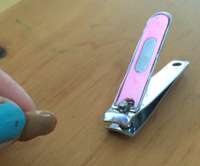
Figure 1. Nicked seed coat of bean with fingernail clippers. Source: Stacy Swartz
To scarify smaller seeds, you can place them in a closed container with rocks/stones and shake it to crack open the seed coat or put them on a surface and scratch the other side with sandpaper (Gilroy, 1986). Be careful not to damage the embryo of the seed. 2 Some seed dormancy mechanisms are not fully understood. Several Annona species have either external or internal dormancy mechanisms that may require cold dormancy and/or seed coat softening such as A. crassiflora, A. macroprophyllata, and A. purpurea (da Silva et al., 2007; Ferreira et al., 2016).
Environmental factors
Soil texture and moisture
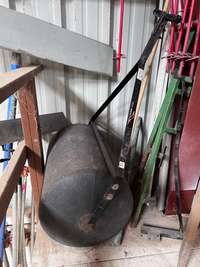
Figure 2. Simple water roller to help increase seed-to-soil contact in coarse soils. Source: Tim Motis
Seeds require moist conditions for germination to take place. Soil texture and organic matter content impact the water holding capacity of soils and therefore the germination of seed. Poor seed to soil contact in sandy soils can cause insufficient moisture for seed germination. Ideally, soil texture and moisture should be such that moist soil is firmly in contact with the seed. After planting seeds into soil, you can compact the soil with your hands, feet, or a roller (Figure 2) to increase the seed-to-soil contact. Do this gently to avoid excessive compaction, which could impede seedling emergence. Clay soils are more prone to over compaction than sandy soils. After rain events, clay soils can also form a crust on the soil surface that is difficult for new seedlings to emerge through. Clay soils hold water very tightly and have very small pores. If too much water surrounds seeds, they can become too soft and rot before root initiation. Conversely, sandy soils drain well but are more likely than clay to dry out. If you are digging furrows to place seed in, you can place an amendment high in organic matter such as compost or worm castings at the bottom of the furrow to help moderate the moisture holding capacity of the soil around the seeds. Organic matter moderates against problems associated with both fine (clay) and coarse (sand) soils.
Soil pH
Ideal soil pH for crop growth varies by species. The ideal soil pH for most crops is near neutral (7.0), between 6.5 (slightly acidic) and 7.5 (slightly alkaline). Some crops that grow in acid soils (pH less than 5.5) include rice (Oryza sativa), cassava (Manihot esculenta), mango (Mangifera indica), cashew (Anacardium occidentale), citrus, pineapple (Ananas comosus), cowpeas (Vigna unguiculata), blueberries (Vaccinium spp.), and select grasses (FAO, 2023). A pH value outside of a crop’s optimal range will probably not keep seeds from germinating, but could slow germination (Pérez-Fernández et al., 2006). If you do not know your soil pH, view the FAO’s topsoil pH map. Soil pH can be increased by adding lime, crushed shells, or wood ash and can be decreased by adding sulfur-containing compounds.
Soil salinity
Saline soils are found in arid and semi-arid contexts globally. High soil salinity decreases germination because the high concentrations of salts in the water around the seeds limits the diffusion of water into the seed (the process of imbibing) which is required for germination (Welbaum et al., 1990). Crop varieties (Khajeh-Hosseini et al., 2003) and species differ in the level of soil salinity they can tolerate. For a list of crops that tolerate saline soils and options for growing in saline soils, see ECHO Technical Note 84: Understanding Salt-Affected Soils [http://edn.link/tn-84].
Oxygen
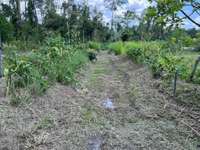
Figure 3. Earth swale used to direct and/or retain water. Source: Tim Motis
The embryo inside a seed is alive and respiring, using oxygen and releasing carbon dioxide as food stores are converted into energy. In cool, dry storage, seed respiration is kept at a minimum to preserve seeds. Once exposed to oxygen, warm air temperature, and moisture, a seed will start to respire more rapidly. Normally, pore spaces in soil contain air that allows for the transfer of gases and uptake of oxygen for seeds and soil life. When pore spaces are very small or are filled with water, oxygen becomes limited. This causes respiration and germination to halt for most crops. Oxygen-limiting conditions are a consequence of excessive compaction or water. Over compaction is often associated with high clay, low organic matter, and the breakdown of soil particles/structure with excess tillage. Overly wet conditions are caused by flooding, waterlogging, and poor drainage (linked to compaction and low spots in a field). Semi-aquatic (rice) and aquatic (water spinach; Ipomoea aquatica) crops tolerate flooding conditions when mature but may still have sensitivity during seed germination. You can mitigate some of these problems by building soil organic matter content through mulching and crop retention, minimizing tillage, planting on raised beds, and the use of swales to direct or hold water in areas of your field (Figure 3).
Light
Seeds without innate dormancy germinate after exposure to adequate temperature, water, and oxygen, while seeds with innate dormancy require an additional stimulus (Frankland and Taylorson, 1983). Light is one potential stimulus for germination that some crops require for germination to begin. Crops that require light to germinate include lettuce, celery, dill, and onion (Steil and Jauron, 2023).
Most crops do not require light for germination to occur, but all crops require light for proper shoot elongation after germination. When plants are grown in areas with too little light, they become leggy (tall with little leaves) because they are searching for light. This stresses the crop and results in a weaker stem structure. To encourage germination and healthy growth, vegetable seeds should be started in a nursery context with moderate light then moved to full sun. Grain and pulse crops should be sown directly into areas with full sun.
Temperature
.png?w=200)
Figure 4. Greenhouse wall with plastic siding that can be partially or completely rolled down to moderate temperature and airflow inside the greenhouse. Source: Tim Motis
In general, seeds germinate in warm temperatures between 20°C and 25°C (Gilroy, 1986).3 Most seeds require at least 24°C for germination, although sensitive species will not germinate if temperatures are slightly higher or lower than a preferred range (Ashworth, 2002). Eggplants and peppers germinate at temperatures around 27°C which is on the high range for lettuce seeds but low range for Malabar spinach (which requires 29°C). Temperatures should stay consistent throughout the germination process, minimizing large flucuations. In the field, moist soil acts as a natural buffer to drastic temperature changes because changes in water temperature take much longer than air temperature shifts. In a greenhouse, closing the walls at night to retain heat or opening them during the day to allow air circulation can help moderate extreme temperatures (Figure 4).
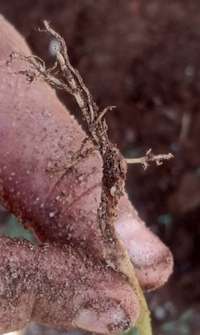
Figure 5. Damping off symptom in a young seedling. Source: Eustacio Gonzales
Pathogens
Fungi, bacteria, and other microorganisms can cause rot or damage seeds in other ways. Some of the most common pathogens are Fusarium and Phytophthora spp. These fungi cause rot that often leads to seedling collapse (Figure 5). Soil and water borne fungal diseases can damage the stems of tender seedlings, causing them to wilt and die. Most of these organisms thrive in warm, moist environments which are also ideal for seed germination. In the nursery, crack or remove seed coats of crops such as canistel, mango, and mamey sapote (Pouteria sapota) to prevent premature rotting of the seed coat before the embryo emerges. Combine frequent watering (given the small volume of planting trays and containers) with good drainage to help control pathogens. In the field, monitor low spots for fungal diseases and replace plants at early signs of infection. You can also treat seeds with pesticides (natural or synthetic) before sowing to mitigate soil and seed-borne infections. Many synthetic options are difficult for smallholder farmers to obtain. Table 1 lists some low-resource options that have been tried for various pests with variable success. More options are likely available locally such as those described by Sridhar et al. (2013). Try local seed treatment options on a small subset to test effectiveness and minimize risk.
| Active ingredient | Control pest | Methods | Effectiveness | Source(s) |
|---|---|---|---|---|
| Gliricidia sepium | Seed-borne pathogens | Chop 1 kg bark, add water to cover. Soak seed in liquid for 12-14 hours. Discard floating seeds. | Effective for corn (Zea mays). Unknown effectiveness on other crops. | Stoll, 2000 |
| Vinegar | Seed-borne pathogens | 3% acetic acid solution. Dip seeds into solution then dry before sowing or storing. Household vinegar is about 5% which does effect germination. | Effectively tested for 14 common garden cultivars. | Gilbert, 2023 |
| Bleach | Seed-borne pathogens | 0.6% NaOCl dilution. Dip seeds into solution then dry before sowing or storing. | Effectively tested for 14 common garden cultivars. | Gilbert, 2023 |
| Hot Water | Seed-borne pathogens | Suspend mesh or cotton bag of seed in hot water (must be appropriate temp) for recommended amount of time (specific to species). Remove and place in cold water to stop the heating process. Dry before sowing or storing. | Highly effective against Alternaria and Phoma species. Also good effectiveness against Xanthomonas campestris. | Nega, 2003 |
| Azadirachtin (Neem) | Various (micro-organisms, insects, and pathogens) | Coat seeds in dried neem leaf powder or in neem oil before sowing. Rates vary based on plant material used (leaves, kernal, seed cake, etc.) | Variable based on target pest. Pre-treating rice seeds with 5% or 10% neem seed oil solution significantly reduced growth and development of two rice insect pests at their larval stage. Neem leaf extract (1.95 mg/ml) inhibited Pythium spp. growth in laboratory contexts. | Kareem et al., 1989; Kareem et al., 2018 |
| Ash | Seed-borne pathogens | Apply in various ways to or with seeds before sowing. | Effective partial control (up to 42% compared to commercial pesticide) for corn against several seed-borne fungi and seedling blight. Variable control of other pests recorded in literature. | Ekpo and Banjoko, 1994 |
| Garlic | Fungal pathogens | Extract garlic juice and dilute in water at a rate of 1:1 to 1:5 (juice to water). Soak seeds in dilution 24 hours before sowing. | Antifungical properties have been reported effective at reducing fungal pathogens up to 52% in infected wheat (Triticum sp.) seeds. Effectively reduced fungal seed born infection in rice. | Perelló et al., 2013; Ahmed et al., 2013 |
| Worm tea | Fungal pathogens | Various dilutions of aqueous vermicompost (whether aerated or non-aerated) from 0.1 to 5%. | Extracts of vermiculture compost are most commonly sprayed on plant leaves as a foliar anti-fungal agent. Some researchers have looked into effects of seed treatments with extracts and found that aerated vermicompost tea effectively helped control Fusarium moniliforme in rice seedlings. | Sarma et al., 2010 |
| Fermentation | Seed-borne pathogens | Ferment seeds in pulp/juice of ripe fruit for 24 to 72 hours. Wash and dry seeds before storage or sowing. | Effective for some seed-borne diseases, but not others. Varied reports for controlling Acidovorax citrulli in watermelon (some reports effective others not). Ineffective for controlling tomato mosaic virus in tomatoes. | Ge et al., 2021; Broadbent 1956; Hopkins, et al., 1996; Ashworth, 2002 |
| Thyme oil | Seed-borne pathogens | For fungistatic effects: dilute thyme oil to 2% in water. Agitate seeds in solution for 5 minutes. Dry before sowing or storing. For bacterial disinfection: dilute thyme oil to 1% and treat for 0.5 hours. | Highly effective against Xanthomonas campestris pv. campestris, Clavibacter michiganensis subsp. michiganensis, Alternaria dauci and Botrytis aclada, Aspergillus flavus. No negative effect on germination. | Nakada-Freitas, 2022; Wolf, 2008 |
| Aerated Steam | Seed-borne pathogens | Expose seeds to aerated steam at 85%-95% humidity. Ideal temperature and duration varies by seed type and target pathogen. Temperatures between 50 and 60° C for durations around 5 minutes were common in the literature cited. Cool rapidly and dry before sowing or storing. | Effective against various species of Fusarium, Drechslera, and Alternaria. Highly effective against Magnaporthe grisea, Cochliobolus miyabeanus, and Gibberella fujikuroi in rice. Effective against Xanthomonas campestris, Botrytis aclada, Stemphylium, Septoria, Ascochyta pisi, Phoma medicaginis, and Pinodella. | Forsberg, 2004 |
| Baking Soda (sodium bicarbonate) | Fungal pathogens | Soak seeds in a 2:1 to 3:1 dilution of baking soda: water before sowing in the field. | Has broad effectiveness against fungi. Researchers verified effectiveness of five different species across soybean and cowpea seed-borne fungi. | Kareem et al., 2018; Afolabi and Kareem, 2018 |
Seed predators
Birds, rodents, ants, millipedes, weevils, and other pests consume seeds. You can treat seeds with pesticides (natural or synthetic) before sowing to deter some seed predators. See table 1 for some ideas. Grain pests such as rice, bean, and maize weevils feed on seeds in storage and can damage the embryo or the food storage structures in seed. For options for controlling pests in stored seed, see EDN 158.
In EDN 104, Motis (2009) mentions the following:
You may need to build sturdy fences to protect plantings. In areas where chickens cannot be excluded, consider transplanting more established plants (e.g., at ECHO we root sugar cane cuttings in pots before transplanting out where chickens are present), or placing obstacles such as palm branches on garden beds or around the base of plantings.
If low-cost and farmer-accepted methods of insect control exist, it could be advantageous to monitor insect activity and intervene as needed to keep infestations to a manageable level. It is wise to decide ahead of time the level of inputs and intervention you will devote to a particular crop. Fruit trees, for example, would merit much more care than a forage crop.
For more information and ideas for pest management, see ECHO Technical Note 98 on Integrated Pest Management.
Agronomic practices
Seeding depth
Another important cause for seed germination or seedling failure includes planting seeds too deep or too shallow. If seeds are planted too deeply, the seed may not contain enough energy to push the shoot out of the soil before it exhausts its food reserves (endosperm). If seeds are planted too shallow, roots may not be anchored deep enough, or seeds may dry out easily. As a general rule, you should plant seeds three to four times the width of the seed (Gilroy, 1986). Small seeds need little or no soil covering but are extremely vulnerable to drying out so make sure to water frequently during the first few weeks of these seeds’ life. Larger seeds have greater amounts of energy to push the first shoot (plumule) through the soil and into the air above the soil. Orientation of the seed being sown is not vital as seeds innately sense gravity and will send shoots up and roots down.
Length of storage and storage conditions (packet sent vs. when planted; time between opening packet and planting)
Strive to plant soon after opening a seed container. Once the container is opened, humidity can adversely affect seed viability. If you store seeds in hot or humid conditions, the viability will quickly decrease, and seeds could die or be compromised in a short period of time. If you do not use all the seeds in one planting, you should store them in a hermetically sealed (airtight) container to exclude humidity. Place unused seeds in sealed containers while they are still dry, as hermetic sealing of moist seeds will lead to mold. The practice of hermetic sealing can be optimized by combining it with vacuum sealing and/or desiccants. Vacuum sealing withdraws air from a container, lowering humidity and oxygen in the container; reduced oxygen, in turn, slows respiration and the activity of insect pests. For more information about vacuum sealing, see ECHO Technical Note 93: Vacuum-Sealing Options for Storing Seeds. Desiccants like toasted rice absorb humidity, helping to keep seeds dry in containers that need to be opened from time to time (e.g., to take a few seeds out for planting). Species vary in shelf life or life span in storage. The seed storage life of lettuce or melons is not the same as maize or beans. For more information and options for seed storage, see ECHO Best Practice Note 5: Seed Storage in the Tropics.
Watering
Watering too much, too little, or inconsistently can impact germination. After initial sowing, allowing the soil to dry out can kill emerging seedlings. Consistent watering with adequate drainage is essential. Seed should stay moist but not saturated during germination. Some crops such as jack bean (Canavalia ensiformis) can germinate with very little rainfall or irrigation while others such as pumpkins and squash (Cucurbitaceae) require considerable water supply4 for successful germination. These crop seeds could be soaked in water before sowing to help with seed water absorption (imbibition; Gilroy, 1986).
Variability in nursery conditions
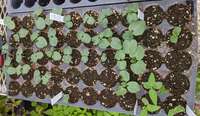
Figure 6. Seedling tray with multiple species and varying germination success per species. Source: Holly Sobetski
When working in a nursery setting, people often optimize tray space by sowing two or more crops in each seedling tray. While this saves resources, the two crops may have different light and moisture requirements, resulting in poorer germination for one or more crops in the tray (Figure 6). If two or more species are grown in the same seedling tray, make sure they have similar requirements and growth patterns.
Post-harvest handling of seed
Germination and seedling success can be altered by poor post-harvest handling of the seeds during production. If the grower handled seeds roughly during harvest, threshing and winnowing, or cleaning, the seed coat (pericarp) may have been cracked or damaged, allowing humidity to enter the seed and decreasing the life span and vigor of the seed. You should receive seeds from suppliers securely and promptly. Seeds should be completely clean, free of fruit pulp which can rot and cause fungal infections, and free of weed seed or chaff.
Assessing Seed Quality
Seed viability

Figure 7. Simple germination tests of beans using a wet paper towel (left) or directly seeding into soil (right). Source: Stacy Swartz
Seed viability is a measure of how many seeds are alive and relates to the number of seeds that could develop into productive plants under farmer field conditions (Bicksler, 2011). The greater the viability of your seeds, the fewer seeds will be needed to establish a desired number of plants in the field or nursery. The most common way to assess viability is with a germination test (Figure 7).
Seed vigor

Figure 8. Malformed okra (Abelmoschus esculentus) seed with shoot emerging before root. Source: Stacy Swartz
Seed vigor relates to the overall capacity of seeds to grow well under a range of field conditions and stresses. This can be assessed, in part, by recording germination percentage each day and noting the number of days to reach 50% germination. Another indicator of seed vigor is the percentage of seedlings that are normal. Normal seedlings are not stunted and have well-developed roots and shoots (Figure 8). It is possible to conduct germination tests in soil from farmers’ fields, but this is not always practical and disease and pest-related factors can make results difficult to interpret. Test the germination of stored seeds on a regular basis (at least once a year) to assess their viability over time. This will tell you the rate at which seed vitality is deteriorating. For details on how to conduct simple germination tests, see ECHO Asia Note 11 [http://edn.link/an11].
What went wrong? Diagnostic table
| Problem | Potential cause |
|---|---|
| No sprout | Seed not viable, diseased, planted too deeply, overwatered, or underwatered |
| Slow sprout | Soil too cold, not enough water |
| Seedlings are yellow and leggy | Too little light, too warm |
| Seedlings are leggy | Too much water, too little light |
| Seedlings collapse at soil line | Damping-off, encouraged by low light and soil that is too warm or wet |
| Seedlings are stunted | Too little water, aphids |
| Seedlings are healthy but grow slowly | Not enough soil space for roots |
References:
Afolabi, Q.O. and K.T. Kareem. 2018. Antifungal activities of Carica papaya and sodium bicarbonate against soybean fungi. International Journal of Biological and Chemical Sciences, 12(5).
Ahmed, M., M. Hossain, K. Hassan, and C.K. Dash. 2013. Efficacy of Different Plant Extract on Reducing Seed Borne Infection and Increasing Germination of Collected Rice Seed Sample. Universal Journal of Plant Science, 1(3):66-73
Ashworth, S. 2002. Seed to Seed: Seed Saving and Growing Techniques for Vegetable Gardeners. Seed Savers Exchange.
Bicksler, A.J. 2011. Testing Seed Viability Using Simple Germination Tests. ECHO Asia Notes no. 11.
da Silva, E.A.A, D.L.B. de Melo, A.C. Davide, N. de Bode, G.B. Abrue, J.M.R Faria, and H.W.M. Hilhorst. 2007. Germination Ecophysiology of Annona crassiflora seeds. Annals of Botany, 99(5):823-830.
Dhanvantari, B.N. 1994. Further studies on seed treatment for tomato bacterial canker. Proceedings of the 10th Annual Tomato Disease Workshop, 49-51.
Ekpo, E.J.A., and K.M. Banjoko. 1994. Efficacy of Fernasan D and wood ash in the control of seed-borne fungi, pre-emergence mortality and seedling blight of maize. Discovery and Innovation, 6(1):84-88.
Ellis, B. and F. Bradley. 1996. The organic gardener’s handbook of natural insect and disease control. Rodale Press. Emmaus, Pennsylvania.
FAO. 2023. FAO Soils Portal: Management. Food and Agriculture Department of the United Nations. https://www.fao.org/soils-portal/soil-management/.
Ferreira, G., I. de-la-Cruz-Chacón, and A.R. González-Esquinca. 2016. Overcoming seed dormancy in Annona macroprophyllata and Annona purpurea using plant growth regulators. Revista Brasileira de Fruticultura, 38(3).
Forsberg, G. 2004. Control of Cereal Seed-borne Diseases by Hot Humid Air Seed Treatment. Plant Pathology and Biocontrol Unit, Uppsala.
Frankland, B. and R. Taylorson. 1983. Light Control of Seed Germination. In: Photomorphogenesis. Springer-Verlag Berlin Heidelberg.
Ge, Yixin, L. Luo, L. Xia, X. Luo, H., Bi, H. Gong, Y Tian, R.R. Walcott, and B. Hu. 2021. Fermentation: An unreliable Seed Treatment for Bacterial Fruit Blotch of Watermelon. Plant Disease,105(4).
Geneve, R.L. 2003. Impact of temperature on seed dormancy. HortScience, 38(3):336-341.
Gilbert, G.S. 2023. Seed Disinfestation Practices to Control Seed-Borne Fungi and Bacteria in Home Production of Sprouts. Foods. 12(4):747.
Gilroy, D. 1986. Starting Right with Seeds. Rodale’s Organic Gardening. Rodale Press Inc. Emmaus, PA.
Hopkins, D.L., J.D. Cucuzza, and J.C. Watterson. 1996. Wet seed treatments for the control of bacterial fruit blotch of watermelon. The American Phytopathological Society. D-1996-02230-05R.
Kareem, A.A., R.C. Sacena, M.E.M. Boncodin, V. Krishnasamy, and D.V. Seshu. 1989. Neem as Seed Treatment for Rice Before Sowing: Effects on Two Homopterous Insects and Seedling Vigor. J. Econ. Entomol., 82(4):1219-1223.
Kareem, K.T., Q.O. Afolabi, A.Y. Shorinmade, and O.A. Akinbode. 2018. Management of seed-borne fungi in cowpea using leaf extracts and sodium bicarbonate. J. Appl. Sci. Environ. Manage., 22(4):586-570.
Khajeh-Hosseini, M., A.A. Powell, and I. Bingham. 2003. The interaction between salinity stress and seed vigour during germination of soyabean seeds. Seed Science and Technology, 31(3):715-725.
Motis, T. 2009. Introducing a New Crop: Reasons Why Seeds Fail. ECHO Development Notes no. 104.
Nakada-Freitas, P. 2022. Effect of thyme, lemongrass and rosemary essential oils on Aspergillus flavus in cauliflower seeds. Horticultura Brasiliera, 40(1):71-75.
Nega, E. 2003. Hot water treatment of vegetable seed — an alternative seed treatment method to control seed-borne pathogens in organic farming. Journal of Plant Diseases and Protection, Vol. 110, No. 3, pp. 220-234.
Nesmith, B. 1994. Seed Treatments for Commercial Vegetables in Kentucky.
Perelló, A., M. Gruhlke, and A.J. Slusarenko. 2013. Effect of garlic extract on seed germination, seedling health, and vigour of pathogen-infested wheat. Journal of Plant Protection Research, 53(4).
Pérez-Fernández M.A, E. Calvo-Magro, J. Montanero-Fernández, J.A. Oyola-Velasco. 2006. Seed germination in response to chemicals: effect of nitrogen and pH in the media. J Environ Biol., 27(1):13-20.
Sarma, B.K., P. Singh, S.K. Pandey, and H.B. Singh. 2010. Vermicompost as modulator of plant growth and disease suppression. In: Dynamic Soil, Dynamic Plant.
Sridhar, S., S.A. Kumar, R.A. Thooyavathy, and K. Vijayalakshmi. 2013. Seed Treatment Techniques. Centre for Indian Knowledge Systems, Chennai Revitalizing Rainfed Agriculture Network.
Steil, A. and R. Jauron. 2023. Germination Requirements for Annuals and Vegetables. Iowa State University Extension and Outreach: Horticulture and Home Pest News.
Stoll, G. 2000. Natural Crop Protection in the Tropics. Margraf Verlag. Weikersheim.
Welbaum, G.E., T. Tissaoui, and K.J. Bradford. 1990. Water Relations of Seed Development and Germination in Muskmelon (Cucumis melo L.): Sensitivity of Germination to Water Potential and Abscisic Acid during Development. Plant Physiology, 92(4):1029-1037.
Wolf, J.M. van der. 2008. Disinfection of vegetable seed by treatment with essential oils, organic acids and plant extract. Seed Science and Technology, 36:76-88.